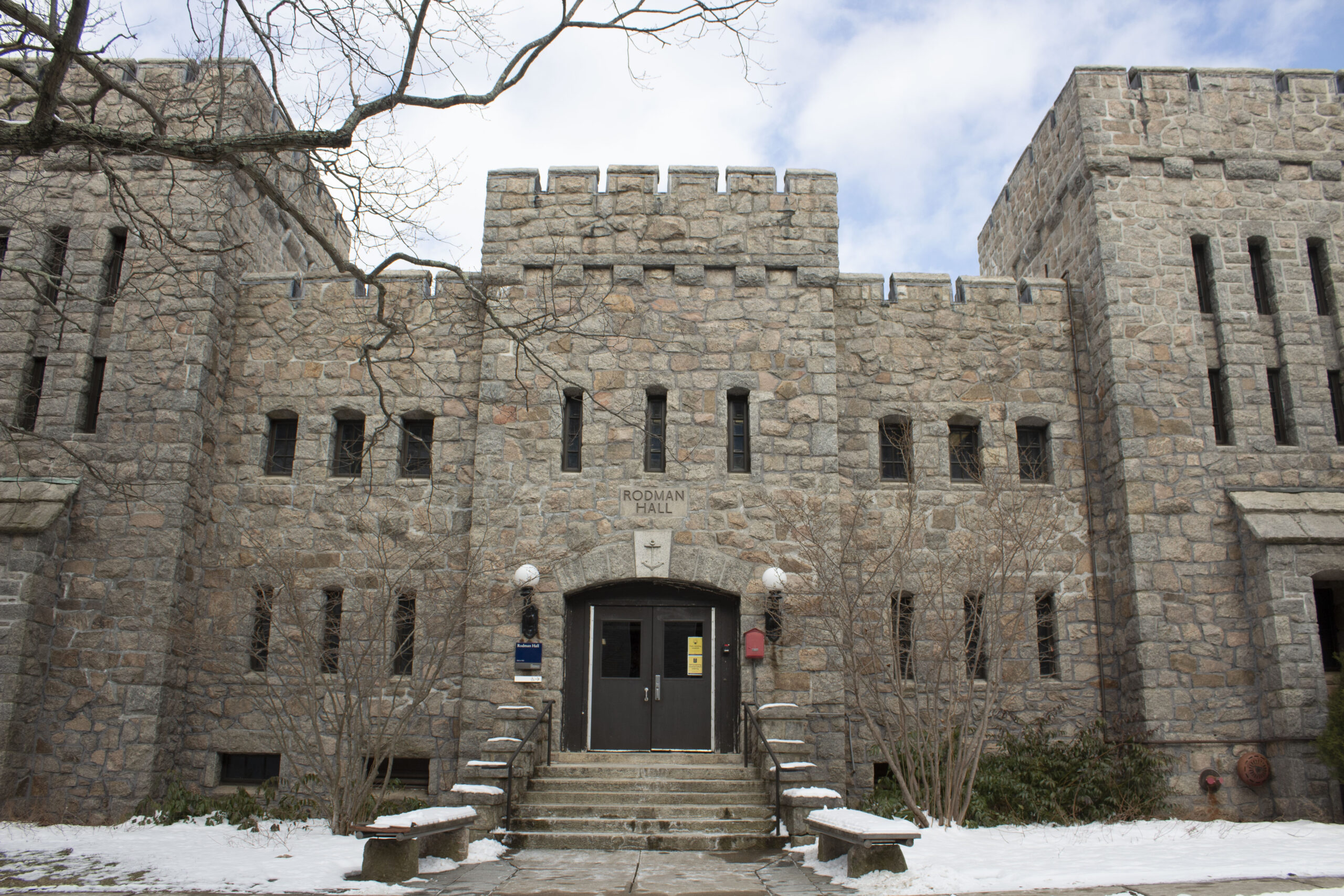From an armory to a gymnasium to classrooms, Rodman Hall has been used for a range of purposes since it was built. PHOTO CREDIT: Hannah Charron | Staff Photographer
Rodman Hall has served many different uses throughout its history, from an armory to a gymnasium, but today is home to the Graduate School of Library and Information Services and the Community Planning and Landscape Architecture Department.
Catherine DeCesare, an assistant professor of history, said that funds were allocated by the General Assembly to build Rodman Hall, Edwards Hall and Bliss Hall in 1928.
According to her, the construction crews used granite that came from a quarry on campus.
“Many of the original buildings, around the quad especially, were built from the granite right here on-site, [until they ran out] in 1928,” said DeCesare. “So in the midst of this building project with these three buildings, they’re going to run out of the local granite and they’re going to have to get outside granite… They used remnants of what was left here on campus for the front facade of Rodman.”
she said that the building was first an armory on campus because the University of Rhode Island had a strong affiliation with the military, especially in the 1920s after World War I.
According to the URI Digital Commons, the building was first called Hammond Hall in honor of a commandant of the first reserved officers training corps unit, Captain Hammond.
“Rodman, the name was actually given later on, so it was built in, like I said, 1928, but it doesn’t really get its name until the next decade, till the 1930s,” said DeCesare. “It’s going to be named after Thomas Rodman, who was one of the earliest instructors at this school when it was first a state agricultural school.”
Paul DePace, the director of capital projects at URI, said that the building was transitioned to a gymnasium after the armory in the, although the year of the change is uncertain.
“It was a gym at least through the 70’s,” said DePace.“I actually remember playing volleyball in that gym back somewhere.”
DePace also mentioned the athletic history associated with Rodman Hall, including the revolutionizing fast-break basketball created by basketball coach Frank Keaney, an offensive technique to rush towards the net before the other team’s defense can stop you.
“Fast break basketball, as we came to know it today, really started in that gym,” said DePace.
He said that Rodman Hall’s gymnasium was later replaced by Keaney Gymnasium in 1953, and the old gym was converted with an intermittent floor. They put a second floor in the building to take up the height of the gym, and the landscape architecture department currently resides on that floor.
According to DePace, since Rodman Hall is a masonry building, in recent years there’s been deterioration. In the last 10 years, work has been done to replace the windows.
“Of course, being an old building means it needs work,” said DePace, “It’s closing [in] on 100 years old. It has a skylight that was part of the original construction that is aging and needs to be replaced. And traditional masonry work needs to be done on it. That work is scheduled in the University’s asset protection plan to happen in fiscal [year] 23 and fiscal [year] 24.”
Fiscal years at the University start on July 1, according to him. DePace said that capital projects will most likely start designing work on the renovations this summer and do the construction in the year or two that follow.





